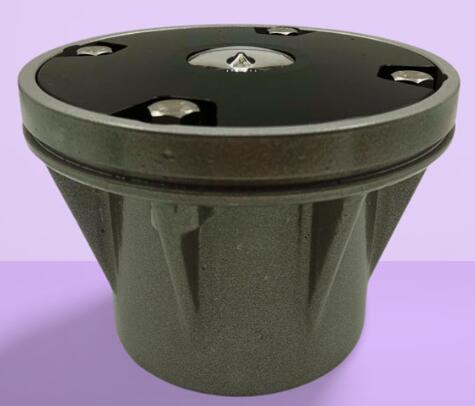Illuminating Safety: The Critical Role of Helicopter Pad Lights
Helicopter pad lights are essential for ensuring safe and efficient aviation operations. These specialized lighting systems guide pilots during takeoff, landing, and taxiing, particularly in low-visibility conditions or during night operations. With advances in technology, helicopter pad lights have become more efficient, reliable, and environmentally friendly. This article explores their key features, benefits, and applications while highlighting their importance in modern aviation.
Understanding Helicopter Pad Lights
Helicopter pad lights are designed to illuminate landing zones, providing clear visual guidance to pilots. These lights adhere to strict aviation standards, ensuring compatibility with diverse operational needs. By combining durability and advanced illumination, helicopter pad lights enhance safety and operational efficiency in various environments.
Features of Modern Helicopter Pad Lights
Helicopter pad lights have evolved significantly, incorporating advanced features that enhance their functionality:

1. Energy-Efficient Illumination
Modern helicopter pad lights utilize LED technology, which consumes less energy while providing brighter and more uniform lighting. This efficiency reduces operational costs and minimizes environmental impact.
| helicopter pad lights |
| helicopter pad light |
2. Weather Resistance
Designed to endure harsh environmental conditions, helicopter pad lights are built with materials that resist corrosion, moisture, and extreme temperatures. This ensures reliable performance in demanding settings such as offshore platforms and remote areas.
3. Customizable Configurations
Helicopter pad lights offer customizable options, including adjustable brightness levels, flash patterns, and color schemes. These configurations allow operators to tailor lighting systems to specific operational and regulatory requirements.
4. Remote Control and Automation
Many helicopter pad lighting systems now feature remote control capabilities, enabling operators to adjust settings and monitor performance from a distance. Automation options, such as dusk-to-dawn sensors, further enhance efficiency and convenience.
Applications of Helicopter Pad Lights
The versatility of helicopter pad lights makes them indispensable across various sectors. Key applications include:
Emergency Services
Helicopter pad lights play a critical role in emergency medical evacuations and rescue operations. Their reliability ensures safe landings even in challenging conditions, allowing emergency responders to operate effectively.
Offshore Platforms
In offshore settings such as oil rigs and wind farms, helicopter pad lights provide essential guidance for landing zones. Their robust construction ensures durability against saltwater corrosion and high winds.
Urban and Rooftop Helipads
Urban environments demand precise lighting systems to support helipads on skyscrapers and hospitals. Helicopter pad lights enhance visibility and reduce the risk of accidents in densely populated areas.
Military and Defense Operations
Helicopter pad lights are crucial for tactical missions and training exercises. Their adaptability and reliability make them suitable for a variety of military applications.
Private Aviation
For private estates and corporate facilities, helicopter pad lights offer an efficient and aesthetically pleasing solution to ensure safe landings and takeoffs.
Benefits of Helicopter Pad Lights
Helicopter pad lights offer numerous advantages that contribute to their widespread adoption:
Enhanced Safety
Clear and reliable illumination reduces the risk of accidents during landing and takeoff, even in adverse weather conditions or low-light environments.
Cost-Effective Operation
LED technology and durable construction minimize maintenance requirements and energy costs, making helicopter pad lights a cost-effective choice for long-term use.
Sustainability
By using energy-efficient components and eco-friendly materials, helicopter pad lights align with global sustainability initiatives.
Compliance with Standards
Helicopter pad lights are designed to meet international aviation standards, ensuring safe and consistent operation across various jurisdictions.
Challenges and Considerations
While helicopter pad lights offer significant advantages, there are challenges to address:
Initial Installation Costs: The upfront investment for high-quality lighting systems can be substantial, though the long-term benefits often outweigh the initial expense.
Environmental Factors: Extreme conditions such as heavy fog or snow may necessitate supplementary lighting aids for optimal visibility.
Regular Maintenance: While LED systems require less upkeep, routine inspections are necessary to ensure consistent performance.
Future Trends in Helicopter Pad Lights
The future of helicopter pad lights is shaped by ongoing advancements in technology and design. Emerging trends include:
Solar-Powered Systems: Combining LED technology with solar panels to provide sustainable and independent lighting solutions.
Smart Connectivity: Integration with IoT platforms for real-time monitoring and automated adjustments.
Adaptive Lighting: Dynamic systems that adjust brightness and color based on weather, time of day, and operational requirements.
Helicopter pad lights are a vital component of modern aviation infrastructure, ensuring safety, efficiency, and sustainability in diverse operational contexts. Their advanced features and adaptability make them an indispensable tool for enhancing visibility and reducing risks. As technology continues to evolve, helicopter pad lights will remain at the forefront of aviation safety, illuminating pathways for secure and seamless operations worldwide.
